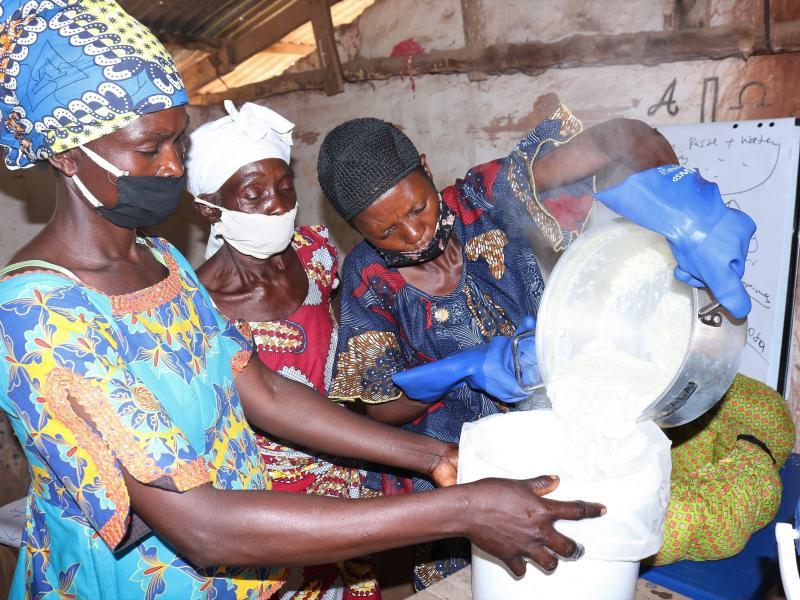Small-scale processing toolkits for nutritious foods

Description of the innovative solution
Small-scale multipurpose processing tools/kit allow individuals to process foods at a low cost to diversify food products, reduce food loss, preserve foods, increase food safety, shelf life of foods and/or enhance the nutrient content of foods. Such processed foods could also be sold/exchanged and thereby provide a novel and stable revenue. Such tools/kits can be distributed in infrastructure-poor environments and be made available for youth or women. These could be designed for different foods such as dairy, for example to produce fresh cheeses. Tools could also be designed to process fruits...
Small-scale multipurpose processing tools/kit allow individuals to process foods at a low cost to diversify food products, reduce food loss, preserve foods, increase food safety, shelf life of foods and/or enhance the nutrient content of foods. Such processed foods could also be sold/exchanged and thereby provide a novel and stable revenue. Such tools/kits can be distributed in infrastructure-poor environments and be made available for youth or women. These could be designed for different foods such as dairy, for example to produce fresh cheeses. Tools could also be designed to process fruits such as steam juicers, solar dryers or dehydrators to increase the shelf life of fruits and vegetables or to manually process nuts into pastes. Other examples include a multifunctional soy small-scale processing kit could help transform soy in soy milk, yoghurt and tofu.
Examples and additional resources
Real-world examples
See this solution in action in different contexts and settings around the world
SoyaKit
Post-harvest crop processing toolkit
Additional resources
Learn more about this solution through studies, articles, business cases, and other information
Scaling Up Specialty Crop Processing
Contacts
Connect to others working on and with this solution around the world
Pathways to uptake
Engage with our “backcasting tool” to imagine and design “pathways to uptake” for this solution in your setting.
This process involves defining a future vision of this solution being used in your context, and then working “backwards” to identify necessary steps to achieve this vision by 2030. Going through this exercise as an individual or with a team can help to clarify the WHAT/WHEN/HOW of moving a solution (or package of solutions) towards having major impact. We hope these pathways will inspire outside-of-the-box thinking, creative approaches, and actionable concrete steps to move ideas into action.
Pathway builder
Explore pathways for this solution
Be the first one and add a pathway for this solution!